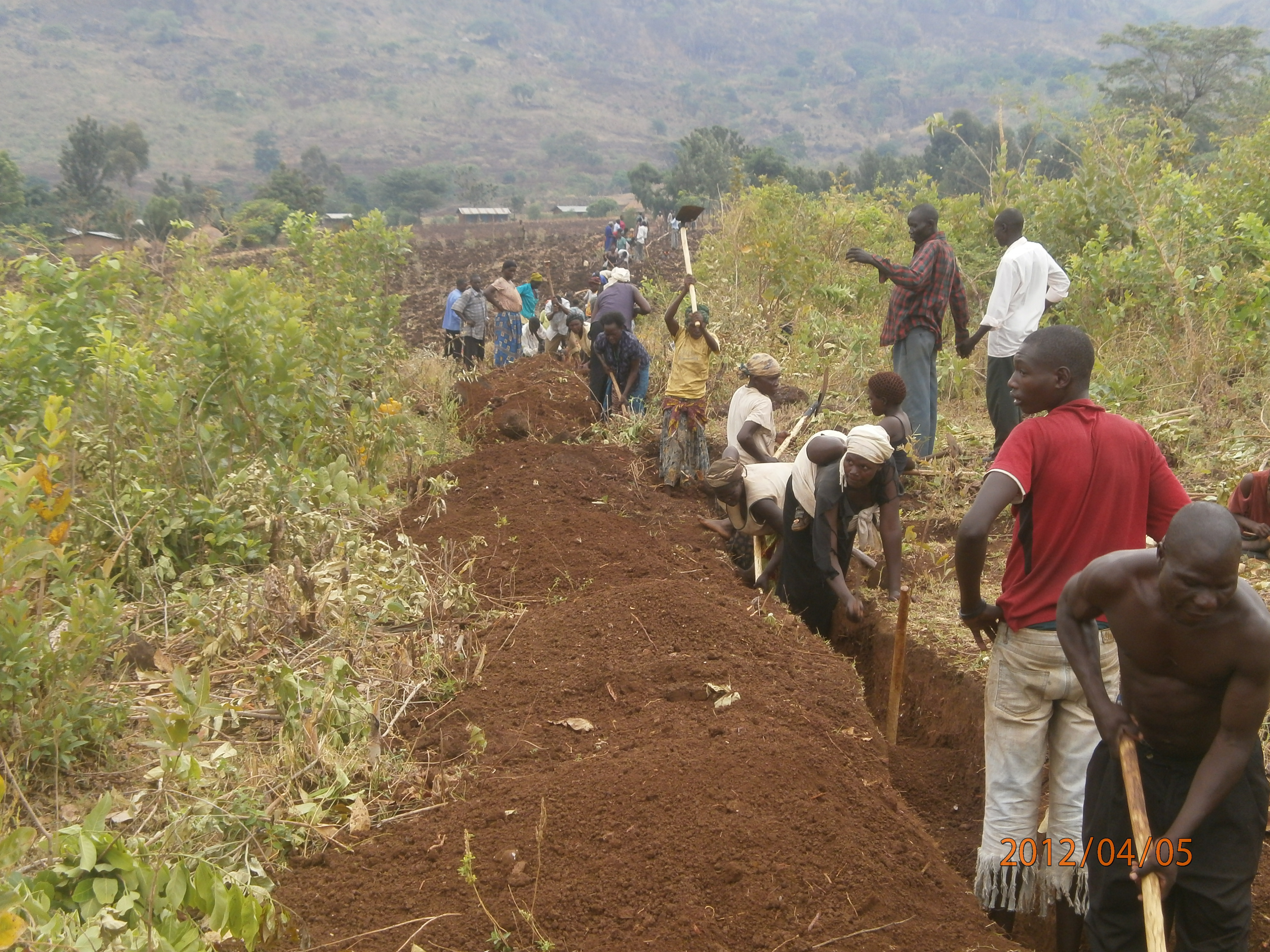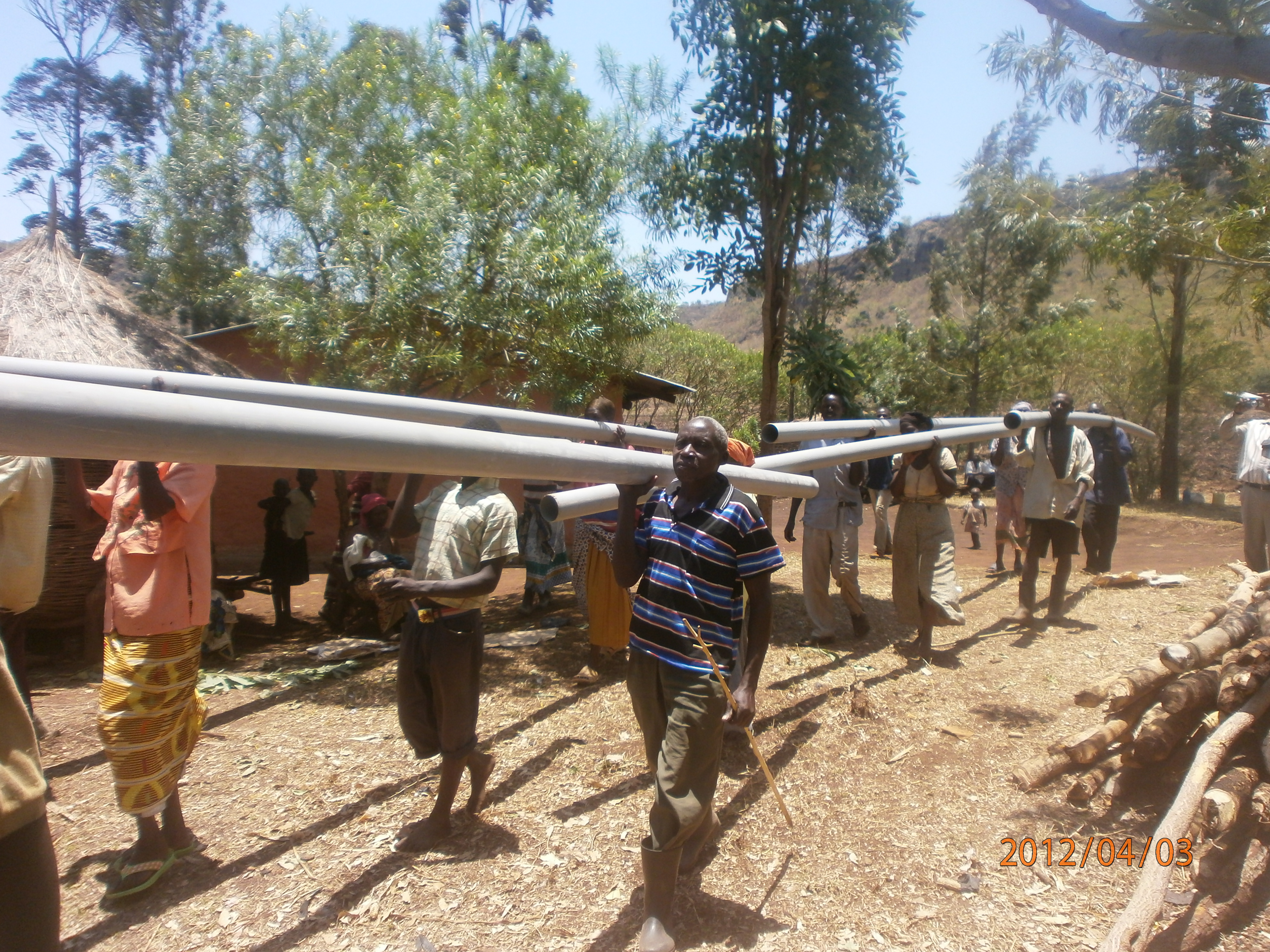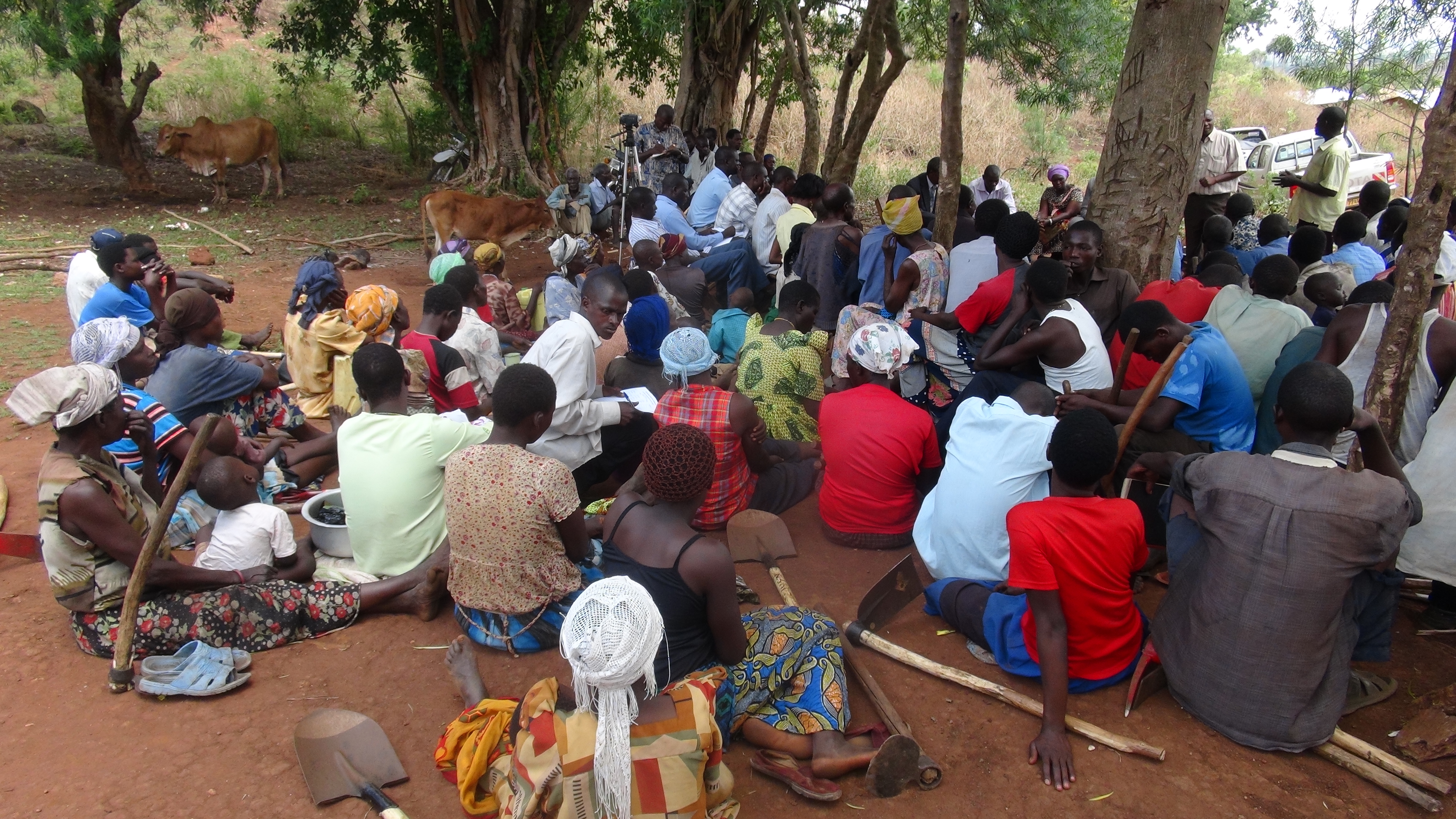



The purpose of this building block is to address the immediate needs of an extremely vulnerable community, therefore enabling them to focus their attention on the implementation of EbA measures. The most pressing needs for the Sanzara community were water and livelihood opportunities. In order to address the water scarcity, a gravity flow scheme was constructed on River Sipi to facilitate a stronger understanding of the ecosystem’s value, and to motivate its restoration through EbA measures. The gravity flow scheme was participatorily agreed upon with the community and the Kapchorwa District Local Government. The community provided the labour for its construction, and the District provided the technical expertise.
In addition, a performance-based cash grant incentive scheme was introduced as a way of providing the much-needed cash for meeting day-to-day needs, while also catalysingthe implementation of EbA measures. Households/land owners were supported to develop climate-smart land use plans, depending on the climate change challenges on their land. Cash incentive payments to participating farmers/land owners were then made in 4 equal instalments, based on their compliance and progress in implementing these plans.
For the performance-based cash grant scheme, the following factors are key:
- Farm-level planning, which culminates in climate-smart land-use plans.
- A comprehensive monitoring system that is able to track implementation progress at the farm level.
- A participatory and transparent mechanism for distributing the cash grants.
- Participatory identification of interventions to address immediate needs. As in the case of the gravity flow scheme, local contributions toward these interventions are essential, as they build ownership and commitment.
For an incentive scheme to be effective, it should include as many people in the targeted community as possible, without excluding any particular group. In Sanzara, the incentive scheme was introduced as a trial and only targeted 100 people. This created unnecessary tension and distraction, as some people complained about being left out, while others were trying to implement the agreed climate-smart interventions.
Participatory planning is crucial to ensuring that all partners, beneficiaries, and stakeholders are engaged in the process from the very beginning. This builds a sense of ownership for the measures and helps ensure their longevity. The participatory visioning that was undertaken with communities at the onset of the project provided a point of reference for communities to check progress during their annual review meetings. The 10-year vision that was developed (2012 – 2022) continues to be a reference point for communities and other stakeholders.